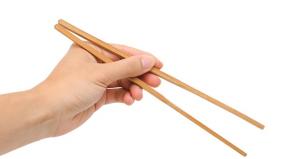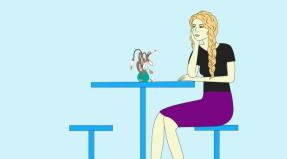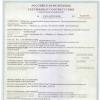Product life cycle extension. Types of product life cycle curves. Methods for extending the life cycle of a product. Key Pricing Factors
The economic development of a product has a complex cyclical nature, as a result of which the problem of the nature, types, and frequency of cyclical fluctuations is important for identifying the external causes of the crisis of specific products. The main goal of managing the life cycle of a particular product is to extend the period of its existence on the market.
PRODUCT LIFE CYCLE (LC)- a process consisting of successively advancing stages of the birth of an idea, the development of a product, the foundation of its production, the growth of market sales, obsolescence, the decline and cessation of production, replacement with a new, more progressive product. Almost all goods produced by people are forced to go through such a cycle for a different time, and the concept of the LCT is based on the fact that any product, no matter how exceptional its properties, is sooner or later forced out of the market by others, more perfect or cheaper.
When we talk about the LCT, we mean the following:
1) the life of the goods is limited;
2) the sales volume of the product includes several stages, each of which is characterized by specific tasks, opportunities and problems;
3) at different stages of the life cycle, the profit that the product brings varies;
4) each stage of the life cycle requires a special approach to the strategy in the field of marketing, finance, production, sales and personnel management.
This concept implies the passage of a number of stages by the product: product development; bringing goods to market; growth; maturity; decline.
Rice. 8.2.1. Graphs of sales volumes and accumulated profits of the life cycle
At the product development stage, product samples are created that claim to be new products based on scientific research, design, construction, technological development and testing. It is generally accepted that the process of creating a new product includes the formation of a concept, the selection of progressive ideas, the development of a concept and its experimental verification, the formation of a marketing strategy for a new product, an analysis of the possibilities of production and marketing of a product, design development, mass production, testing the first batches of goods in market conditions, commercial production.
The stage of bringing the product to the market begins from the moment the product is launched into commercial production, it goes on mass sale. At this stage, the manufacturer does not yet make a profit as a result of the fact that the company's costs continue to increase, which began with the development of the product, the costs are not yet paid off by sales income despite the increase in sales and the ability to sell a new product at a higher price in comparison with obsolete goods.
At the stage of growth, if the new product satisfies the requirements of the market, the object of its sale begins to increase, the demand for the product increases. Due to the increase in sales, production becomes profitable, the mass of profit increases. Gradually, the initial costs of the manufacturer of the goods pay off at the expense of profits.
In the maturity phase, there is a slowdown in the growth rate of sales of the product and by the end of this stage it reaches zero due to the saturation of demand and a decrease in the interest of buyers in the product with a simultaneous increase in sales revenue until it reaches a maximum and starts to decline. Most often, by this time, the manufacturer of the goods manages to fully recoup the costs with the profit received, but the additional profit becomes less and less.
Decline phase - a period of sharp decline in sales due to a decrease in demand from consumers. As a result of a decrease in sales, profits become smaller, there comes a point when the proceeds from the sale of goods do not compensate for the costs of production and marketing. Production becomes unprofitable, and the time comes for curtailment, cessation of production and sale of goods. The product life cycle ends.
The reasons for the "aging" and "dying" of the product may be the following factors:
Demand potential has been exhausted;
Changes in the structure of demand (changes in the structure of the population, changes in values, falling purchasing power);
Technical progress;
Changing economic conditions.
In this case, the main task of the marketing service is to closely monitor changes in sales and profits in order to capture the boundaries of the stages and, accordingly, make changes to the marketing program. The main marketing actions that must be performed by marketing service managers at various stages of the product life cycle can be illustrated in Table. 8.2.1.
Table 8.2.1 The main characteristics of the stages of the product life cycle and typical marketing activities of the enterprise
| Stages of the product life cycle | |||||
| Creation, development | Market introduction | Growth | Maturity | decline | |
| SPECIFICATIONS | |||||
| Sales | Not available, dangerous sales possible | Weak | fast growing | slow-growing | Falling, search for new goods |
| Profit | Missing | Minimum or zero profit, losses | The largest | Stabilizes and begins to decline | Low or no |
| Consumers | Not | Lovers of the new | Expanding mass market | mass market | Conservative |
| Number of competitors | No or single, potential | small | Increasing | big | Overwhelming |
| Production | Training | Development | Large serial | Maximum | shrinking |
| MARKETING ACTIONS OF THE ENTERPRISE | |||||
| Main strategic efforts | Finding a niche in the market | Market expansion | Market position approval | Standing up for your share of the profits | Maintaining profits, reducing costs |
| Marketing costs | Aging | High | High but decreasing | Contracting | Low |
| R&D | Research and design | Product development | Improvement, modernization | Modernization | Search for a replacement |
| Distribution of goods | Not | Uneven | intensive | intensive | selective |
| Price setting | Trial | High | Medium | Low | Lowest |
| Product | Design, prototypes | Basic option | Improved | Differentiated | Selective |
The concept of the life cycle can be applied to individual products (trademarks), as well as to entire classes of products. The duration of the life cycle of product classes is significantly higher than individual brands of goods of this class, since an obsolete brand can be replaced by a new brand of goods of the same class.
The idea of the life cycle of goods plays a fundamental role in marketing, since different stages of the life cycle correspond to different marketing strategies and techniques, as a result of which the company's product strategy is constantly changing. Therefore, the product life cycle curve does not always have the same shape. One commonly encountered variation is the "recycle" curve. The second "hump" of sales is caused by sales promotion activities carried out at the stage of product decline. Another variation is the "comb" curve), consisting of a series of successive cycles generated by the discovery of new characteristics of the product, new ways of using it, the emergence of new users.

Rice. 8.2.2. Varieties of LC curves
The concept of the life cycle can be applied to such well-known phenomena as style, fashion or fetish.
Style is the main original form of expression that arises in a particular sphere of human activity. For example, there are styles in clothing (evening, casual) and art (realistic, surreal, abstract). Once created, a style can exist for many generations, either gaining wide popularity or losing it. The style is characterized by a cycle with several periods of increased interest.
Fashion is the most popular or widespread style in a given period of time in a given field of activity. It is very difficult to predict the duration of an individual stage in the fashion cycle.
Fetishes are private manifestations of fashion that quickly gain everyone's attention, are perceived with great enthusiasm, quickly reach the peak of popularity and very quickly move into the decline stage.
_______________________________________________________________________
Maslova TD Vozhuk ST., Kovalik L.N. Marketing. - St. Petersburg: Peter, 2008. - S. 180.
Stukanova I.P., Nikitina L.A., Dubrovin I.L. Management and marketing. - M.: Colossus, 2007. - S. 144.
Klimin A.I. Marketing: a course of lectures. - M., 2005. - S. 45.
Kolesneva E.P. Commodity policy of the industry enterprise. - Minsk: Information Center of the Ministry of Finance, 2007. - P. 35.
Laptev A., Konev I.P., Silantieva L.P. Strategic and operational marketing. - Petrozavodsk: PetrGU Publishing House, 2006. - P. 77.
Maslova T.D., Bozhuk S.G., Kovalik L.N. Marketing. - St. Petersburg: Peter, 2008. - S. 163-165.
Tutorial output:
Marketing: questions and answers / ed. N.P. Ketova. - Rostov n / a: Phoenix, 2009. - 478 p. - (We pass the exam).
Product life cycle concept
The concept of "product life cycle" (LCT) is one of the most popular concepts in marketing. According to this concept, the life cycle of a product consists of five distinct stages:
- (1) Product development. At this stage, the company finds and implements a new product idea. During this time, sales are zero, and costs rise as the final stages of the project approach.
- (2) Introduction to the market. This stage is accompanied by a slow growth in sales volume. There is no profit due to the high costs of marketing activities.
- (3)Height. The period of rapid market conquest and increase in profits.
- (4) Maturity. At this stage, sales growth slows down, as the bulk of potential buyers have already been attracted. The level of profit remains unchanged or decreases due to an increase in the cost of marketing activities to protect the product from competition.
- (5) Decline. There is a decline in sales and a reduction in profits.
Methods for extending the life cycle of a product
Differentiated, individual activities of the company with groups of consumers, taking into account the peculiarities of consumer behavior and marketing activities to retain consumers in the market provide significant support in extending the life of the product and stabilizing the position of the company in the market. However, the situation when the product is in the stage of maturity requires the company to constantly look for new ways to improve the quality of the product, improve marketing activities and intensify communications with consumers. As the main strategies at the stage of maturity, it is advisable to use various combinations of marketing strategies for modifying the market, product and marketing mix. It can be effective to work on finding ways to use the product more diversely and new areas of its application.
It is possible to transfer an obsolete product to another, for example, smaller, firm in order to receive part of the profits and at the same time develop a new product. And yet, it must be borne in mind that, despite the best efforts of the company, the profitability from the sale of obsolete goods falls, a deep recession sets in, and the goods are eventually removed from production. In such a situation, neither increased advertising nor increased costs for the marketing service will help.
To prevent the stage of decline in the life cycle of a product, it is advisable to increase the duration of the stages of growth and maturity by introducing a new product to the market in advance until the market is saturated with the old product. However, this maneuver is not available to every manufacturer, since the elimination of the gap between the cycles requires an active innovation and marketing policy, the availability of appropriate finances and the intellectual potential of employees.
At the stage of maturity, the main task of marketing activities is to extend the life cycle of the product and involves:
- Ø improvement of the trade assortment due to product differentiation;
- Ø deeper market segmentation and entry into new segments (if there are any left);
- Ш stimulation of already existing buyers to systematic and more frequent purchase of goods;
- Ø conducting competitive advertising campaigns;
- Ш search for new groups of consumers and encourage them to make a purchase;
- ø a gradual decrease in the price level. (2)
- 2. Determine the dependence of the duration of the life cycle of a certain product on the marketing activities carried out (for example, washing powder).
The life cycle of goods (LCC) is the time of existence of a product on the market, the concept of the CLC is based on the fact that any product is sooner or later forced out of the market by another, more perfect or cheaper product. There may be long-lived goods, but there is no eternal goods. The concept of LCT can be applied to a product type, specific model and brand. The type, and especially the specific model, of a product usually follows the traditional life cycle more closely than does the type of product or brand name.
There are several stages of the LCT.
Stage of introduction to the market.
It starts from the moment the product goes on sale. Because the process of distributing a product across multiple markets takes time, sales volume increases slowly during this period. It took several years for a well-known commodity like laundry detergent to enter a period of rapid growth. In the case of expensive new products such as high-definition televisions, sales growth is also constrained by a number of other factors, such as the small number of consumers who can afford to buy the new product.
During the implementation phase, the company either incurs losses or makes little profit due to low sales volume and high costs associated with marketing and advertising.
The ratio of the costs of promoting goods and sales during this period is maximum, since it is necessary:
ü Inform potential consumers about a new, yet unknown product.
l Convince them to try the product and sell it through retail outlets.
The company directs its main efforts to sell washing powder to attract consumers, usually representatives of high-income groups, since prices are quite high at this stage.
Marketing strategy at this stage.
Here, marketing executives can set a very high or low level for each of the marketing variables (price, promotion, distribution, product quality). If we consider only pricing and promotion of washing powder, then company executives use one of the following strategies.
1. The strategy of quickly "skimming the cream from the market."
The company sets high prices for the new laundry detergent and heavily advertises it in all media. A high price makes it possible to obtain a corresponding profit per unit of goods. Strong promotion is necessary to convince the market of the merits of the product, even at high prices. This approach is useful when:
- - most of the potential market is not yet familiar with the product
- - consumers who are familiar with the product, intend to purchase it, and can pay the asking price
- - the company faces potential competitors and intends to win a leading position in the market;
- 2. The strategy of rapid market penetration.
The company sets low prices for a new washing powder and heavily advertises it in all the media, stimulating the desire to purchase a new product. This strategy contributes to the fastest penetration of the product on the market and the conquest of its largest share. It is advisable to use it in the following cases:
- - most buyers are price sensitive
- - there is a risk of strong competitors entering the market
- - the company's costs for the production of goods are reduced with an increase in the scale of production and the acquisition of experience;
- 3. Slow market penetration strategy.
The company sets low prices for washing powder and heavily advertises it in the media. Low prices will lead to quick acceptance of the product, and low promotional costs will lead to higher profits. The company believes that demand is highly sensitive to price, but minimally receptive to advertising. This strategy is used in the following cases:
- - the market is large
- - the market is price sensitive
- - there is a threat of competitors entering the market.
Growth stage.
At this stage, there is a sharp increase in sales. Consumers who have embraced laundry detergent since its introduction to the market will continue to buy it, and others will follow suit. Competitors are entering the market, attracted by the opportunities to produce laundry detergent in large volumes and earn high profits. They offer washing powder with new properties and find new distribution channels. Prices stay the same or decrease slightly as demand increases. Companies keep their promotion costs the same or increase them slightly to compete and continue to attract potential consumers of advertising and other marketing strategies. Profits from increased sales grow much faster than costs, resulting in a lower ratio of advertising costs to sales.
Profits at this stage grow because:
- -advertising costs are related to the higher volume of sales
- - production costs as a result of its expansion are reduced faster than prices are reduced;
However, growth rates are starting to slow down. It is important to determine in time the moment of slowdown in production growth in order to move on to the implementation of new marketing strategies.
Marketing strategies in the growth stage.
In order to maximize the growth stage, a firm can resort to several strategies:
- · Improve the quality of washing powder, give it new properties and “strengthen” its position in the market.
- · Release new models and modifications, as well as expand the range of sizes, fragrances, quality characteristics, washing properties, etc., to protect the main product.
- · Expand into new market segments.
- · Expand existing distribution channels and find new ones.
- · In advertising, move from awareness to stimulating preference.
- · Reduce prices to attract consumers, for whom their level is the dominant factor in the purchase of goods.
A company in the growth stage must decide between a large market share and high current profits. By investing in detergent improvement, promotion and distribution, it has the potential to dominate the market. But at the same time, the company refuses momentary profits in the hope of receiving much more income from the implementation of promising strategies.
stage of maturity.
At a certain point in the existence of washing powder on the market, the growth rate of sales volumes begins to slow down, and a stage of relative maturity begins. In terms of time, this stage is usually longer than the previous ones and poses complex tasks in the field of marketing management.
Most of the laundry detergents on the market are in the maturity stage, and marketing management should therefore be re-engineered for the mature product.
At this stage, there are 3 phases:
- 1. The "growing up" phase - sales growth rates begin to slow down, the sales network stabilizes.
- 2. The phase of "stable maturity" - sales volume is kept at a constant level due to market saturation. Most potential customers have already tried the detergent, and sales figures depend on the population and the need to purchase a new washing powder to replace the old one.
- 3. “Ageing” phase - the absolute level of sales starts to decline as consumer interests switch to another washing powder.
The slowdown in sales growth leads to an increase in stocks of finished products, which leads to increased competition. Competitors seek to find and occupy free market niches. They are increasingly resorting to the sale of washing powder at reduced prices, heavily advertise the product. R&D investments are growing to improve detergents, create new modifications and expand the product range. The weakest competitors drop out of the fight. As a result, only firmly entrenched competitors remain on the market, the main goal of which is to obtain competitive advantages. The dominant position in the market is occupied by several giants, which account for the majority of the manufactured laundry detergent. They serve the entire market and make a profit mainly due to the large volume of production and low costs. These giants are surrounded by many companies that have occupied various niches: companies specializing in serving one segment of the market, in the production of one washing powder. Thus, the leaders of a firm operating in a "mature" market must decide whether to compete for a place in the "big three" and profit from high volumes and low production costs, or turn to a niche strategy and profit from high markups.
Marketing strategies at this stage.
At the maturity stage, some companies move away from the production of laundry detergents with the least demand from consumers, preferring to direct resources to the production of the most profitable products or a new washing powder. Sellers need to constantly look for new ways to use the inexhaustible possibilities of market, product and marketing modification - the mix.
Market modification. A company can increase the number of buyers of "mature" brands of laundry detergent by operating on two components that determine sales:
Sales volume \u003d number of brand consumers intensity of consumption per consumer
There are three ways to increase the number of consumers of the brand:
- 1. Winning the trust of consumers who do not use the product.
- 2. Enter new market segments. The company enters new market segments, identified by geographic, demographic or other principles, on which they use such a hedgehog product, but of a different brand. For example, Ariel successfully sold washing powder for children's clothes and for adults.
- 3. To lure customers of companies - competitors to their side. The company calls to evaluate its product in terms of comparison with competitors. For example, Tix constantly entices customers to switch to its product, using the slogan: “Tix is doubly good in quality and price!”
The increase in the intensity of consumption by one consumer is achieved by the following strategies:
- 1. More frequent use. The company is trying to convince consumers to increase the frequency of using laundry detergent.
- 2. More intensive consumption of washing powder.
- 3. So, the manufacturer of washing powder indicates that the effect is achieved already during the first wash.
- 4. Easier ways to use. The company aims to discover easier ways to use laundry detergent and convince consumers not to miss out. For example, a manufacturer of washing powder on the packaging gives several washing options at different temperatures for different types of fabric.
Product modification. The quality improvement strategy is aimed at improving the functional characteristics of the washing powder - its high content of the necessary substances for perfect washing, the content of additional components (for example, fabric softener or descaler for automatic machines), reliability, prestige.
This strategy is effective:
- - while there is an opportunity to improve the quality;
- - as long as buyers believe claims of quality improvement;
- - as long as enough consumers are willing to pay for higher quality.
A property improvement strategy aims to give laundry detergent new properties (e.g., container size, additives, bonuses) that make it more versatile, safer, or more convenient. By periodically upgrading the washing powder, the company acquires the image of an innovator company and wins the loyalty of those market segments that value precisely these properties. The main disadvantage is that new properties are easily copied by competitors, and if the firm does not constantly strive for leadership, the properties will cease to be profitable.
The visual enhancement strategy is to help the laundry detergent stand out, make it unique and gain consumer loyalty. However, implementing it, the company faces a number of problems. First, it is very difficult to predict whether consumers will like the appearance and which one they prefer. Secondly, changing the appearance of a washing powder usually means discarding the old one, which can cause a negative reaction from consumers. For example, buyers may be attracted to a seemingly insignificant improvement.
Marketing modification - mix. It is not uncommon for a company to seek to stimulate sales by modifying one or more marketing elements. Before you change the marketing mix, you need to answer questions.
- W Price. Will the price cut attract new customers? Or is it advisable to raise the price and thereby emphasize the quality of the washing powder?
- Ш Sales. Is it possible to attract more retailers to the sale of washing powder, use new distribution channels?
- Ш Sales promotion. Do not resort to active methods of sales promotion?
- Ш Personnel changes. Is it possible to increase the number of sales staff and improve the quality of their work?
- SH Service. Does the company have the ability to speed up deliveries, provide more technical assistance, provide credit?
The main problem of marketing mix transformation is that it is easily reproduced by competitors. In this case, the company does not receive the expected profit (as well as competitors), as their marketing efforts will be directed to fight each other.
Recession stage.
Inevitably, the moment when the sales volume of most varieties of washing powder or brands begins to decline. This is due to advances in technology development, changing consumer tastes - this leads to overstocking, lower prices and reduced profits. At this stage, some firms leave the market. The rest can reduce the number of products offered, leave insignificant market segments and lower prices even more.
Recession Marketing Strategy.
Successful management of "aging" goods requires the company to solve a number of problems.
Identification of "aging" goods. The task is to develop a system for detecting washing powder that has entered the decline stage.
Choice of marketing strategy. Some firms at this stage leave the market earlier than others. Much depends on the presence of exit barriers in the industry and their height. The lower the barrier, the easier it is for a company to leave the industry, and the more tempting it is for other firms to continue working and win over remaining customers and increase sales.
There are 5 strategies that firms use at this stage.
- 1. Increasing investment in order to take the lead or strengthen the position in the market.
- 2. Maintaining certain levels of investment until the situation in the industry becomes clear.
- 3. Reducing investment, refusing to serve groups of less profitable customers and at the same time increase investment in profitable niches.
- 4. Refusal to invest in order to quickly replenish funds.
- 5. Refusal of the production of washing powder and the sale of freed-up fixed assets with the greatest benefit.
The decision to exclude a product from the nomenclature. If a company decides to remove laundry detergent from its product line, it needs to consider how it can be done in the most profitable way. If the laundry detergent is sold through the distribution channels and has a good reputation, it can be sold to another company. If the manufacturer is unable to find buyers for his product, he must decide how quickly to remove it from the assortment, how much to maintain inventory and what level of service to ex-customers. (4)
Life cycle time is the period of existence of a product on the market from the moment of its introduction to the exit from the production program.
ZhCT is a concept that describes the sales of a product, profit, consumers, competitors and marketing strategy from the moment a product enters the market until it is withdrawn from the market.
Types of LC are very different both in duration and in form.
The life cycle, or the curve that describes it in the coordinates "time - profit", can be divided into the stages of implementation, growth, maturity, decline
Methods for prolonging the life cycle and characteristics of each of its stages:
The stage of bringing the product to market. The launch phase begins with the distribution of the product and its entry into the market. The introduction process takes time and sales usually grow slowly during this period. Well-known products such as instant coffee, iced orange juice and powdered coffee creamer had to wait more than one year before they entered a period of rapid growth. Slow growth can be attributed to: 1) delays in expanding capacity, 2) technical problems (removing "hooks"), 3) delays in bringing the product to consumers, especially in establishing proper distribution through various retail outlets, 4) unwillingness of customers abandon habitual patterns of behavior 7 . In cases of expensive novelties, sales growth is also constrained by a number of other factors, such as a small number of buyers who are able to perceive the product and afford it.
At this stage, the company either incurs losses or profits are very small due to insignificant sales and high costs of organizing the distribution of goods and stimulating its sale. Promotion costs are at their highest at this time due to the need for concentrated promotional efforts to: 1) inform potential consumers about a new product that they are not familiar with, 2) encourage them to try the product, and 3) ensure that this product is distributed through retail businesses.
There are few manufacturers at this stage, and they produce only the main variants of the product, since the market is not yet ready to accept its modifications. Firms focus their marketing efforts on consumers who are most prepared to buy, typically high-income groups. Prices at this stage are usually higher.
Growth stage. If the novelty satisfies the interests of the market, sales will begin to grow significantly. Early adopters will continue to buy the product. Ordinary consumers will begin to follow their example, especially if they have heard favorable reviews about the product. New competitors enter the market, attracted by the opening opportunity. They will offer a product with new properties, which will expand the market. The growth in the number of competitors will lead to a sharp increase in sales from factories in order to saturate the distribution channels with goods.
Prices stay the same or drop slightly as demand increases. Promotion spending by firms is stagnant or slightly increased to discourage competition and keep the public informed about the product.
Profits rise at this stage, as the costs of sales promotion are already attributable to a larger volume of sales while reducing production costs. In order to maximize the period of rapid market growth, the firm can use several strategic approaches,
1. Improve the quality of the novelty, give it additional properties, release its new models.
2. Penetrate into new market segments.
3.Use new distribution channels.
5. Reduce prices in a timely manner to attract additional consumers.
A firm that employs these market expansion strategies is likely to strengthen its competitive position.
stage of maturity. At some point, the growth rate of sales of goods will begin to slow down - the stage of maturity will begin. In terms of time, this stage is usually longer than the previous ones and poses complex tasks in the field of marketing management. Most of the products on the market are just at the stage of maturity, and therefore, marketing management mainly deals with "mature" products.
The slowdown in sales growth means that many manufacturers are stockpiling unsold goods. This leads to increased competition. Competitors are increasingly resorting to selling at discounted prices and below list prices. Advertising is growing, the number of preferential deals with trade and consumers is increasing. R&D spending is on the rise to create better versions of the product. All this means lower profits. A number of the weakest competitors begin to drop out of the fight. In the end, only firmly entrenched rivals remain in the industry.
A company must do more than just protect its product. The best defense is an attack. And she needs to constantly look for ways to modify the market, product and marketing mix.
MARKET MODIFICATION. The company seeks to increase the consumption of an existing product. It is looking for new users and new market segments. At the same time, she is looking for ways to stimulate more intensive consumption of the product by existing customers. The company may want to reposition the product so that it appeals to a larger or faster growing market segment.
PRODUCT MODIFICATION. A company may also modify the characteristics of its product, such as quality levels, features, or appearance, to attract new users and intensify consumption.
Strategy quality improvement aims to improve the functional characteristics of the product, such as durability, reliability, speed, taste. This approach is effective when: 1) quality can be improved, 2) buyers believe quality improvement claims, and 3) a sufficiently large number of buyers want to improve the quality of the product.
Strategy property improvements aims to give the product new properties that make it more versatile, safer and more convenient. The improvement strategy has been successfully applied by Japanese manufacturers of watches, calculators, copiers, etc.
Strategy exterior design improvements aims to increase the attractiveness of the product. So, to attract buyers who need something new in appearance, automobile firms periodically change the appearance of their models.
MODIFICATION OF THE MARKETING COMPLEX. Among other things, the company should seek to stimulate sales by modifying one or more elements of the marketing mix. To attract new customers and poach the clientele of competitors, you can lower the price. You can try to develop a more effective advertising campaign. You can resort to active methods of sales promotion, such as concluding preferential deals with sellers, issuing coupons that entitle you to a small discount on the price, distributing souvenirs, holding contests. A firm can take advantage of larger market channels, such as active distribution stores, especially if these market channels are experiencing growth. The firm may also offer customers new or improved services.
Recession stage. In the end, the sales of a variety of product or brand will still go down. The decline in sales can be slow or rapid. Sales may drop to zero, or they may drop to a low level and remain at that level for many years. The drop in sales is due to a number of reasons, including advances in technology, changing consumer tastes, and increased competition from domestic and foreign rivals. As sales and profits fall, some firms exit the market. Those who remain can reduce product offerings, eliminate small market segments and least efficient sales channels, slash incentive allocations, and lower prices even further.
Maintaining a declining product in its product range can be extremely costly for a firm. The product may take up too much of the management's time. In addition, it often requires price adjustments and inventory repricing. Its production costs are high, it requires both advertising and the attention of sellers, and it would probably be better to direct funds or forces to organize the production of new, more profitable goods. The very fact of the fall of its success can cause bewilderment among consumers in relation to the manufacturing company as a whole. But the most significant troubles may await the firm in the future. Not being discontinued in a timely manner, decrepit goods interfere with the start of an energetic search for replacements. Such products undermine profitable operations today and weaken the firm's position in the future.
The firm should pay more attention to its decrepit products. The first step is to identify products that have entered the decline stage through regular analysis of their sales performance, market share, cost levels and profitability. For each of them, the company's management must decide either to continue its release, or to "reap the benefits", or to exclude it from the nomenclature. The decision to continue issuing a brand may be made in the hope that competitors will leave a particular field of activity. Management may decide it's time to reap the rewards”, i.e. sharply reduce any costs associated with the product (on production equipment, logistics, R&D, advertising, sales staff, etc.) in the hope that sales will still hold out for some time at a fairly decent level. If successful, the reaping strategy will provide the firm with a short-term increase in profits. Management may also decide to remove a product from the range, either by selling it to another firm or by simply discontinuing production.
Product marking. Trademark and its essence. Basic concepts of trademark practice
Brand- this is a name, term, sign, drawing or a combination of them, designed to identify the goods and services of one seller or a group of them and to differentiate them from the goods and services of competitors. Brand attributes: brand names, brand name, trademark, copyright.
brand name¾ part of the brand that can be pronounced, such as "Avon", "Mercedes", "Disneyland", "Rakhat"
Vintage badge (emblem)¾ part of a brand that is recognizable but not pronounceable, such as a symbol, image, distinctive coloration, or specific typography. Examples are the image of a rabbit in the symbolism of the Playboy Corporation or the image of a lion in the symbolism of the MGM studio.
Trademark- a brand or part of it, provided with legal protection. It protects the exclusive rights of the seller to use the brand name or trademark.
Quality- this is the estimated ability of a branded product to perform its functions: durability, maintainability, reliability, accuracy, ease of operation, etc. In marketing, quality is viewed in terms of consumer perceptions.
Branding decisions appear to indicate the product's ownership by the manufacturer.
Recently, there has been a trend towards the elimination of brand names to reduce prices.
The decision of the owner of the brand can have three ways to transfer their product to the market: under the brand of the manufacturer; under the brand of an intermediary selling this product; both under its own and under the brand of an intermediary.
There are four approaches to the brand naming problem:
1. Individual brand name (not associated with the company name).
2. A single brand name for all products.
3. Collective brand name for product families.
4. Trade name of the company in combination with individual brands of goods.
There are several sources for choosing a brand name: abbreviation (IBM, PC, ABC), invented names (Epsson, Butya), numbers (Chanel No. 5, Century - 21), mythological images (Atlant tires), proper names (Ford) , geographical names (paints "Pittsburgh", "Tula samovar"), dictionary names ("San - Bim" - a sunbeam), foreign words (Lux, Foodmaster), combinations of words (shampoo "Head and Shoulders" - head and shoulders) .
There is a multi-brand approach with two or more brands in the same product category. When developing a marketing strategy for specific products, the seller must decide whether he will offer them as branded. Presenting a product as a brand can increase its value, and therefore such a decision is an important aspect of product policy.
The brand name should not be random. It should contribute to strengthening the idea of the product. The brand name should have the following qualities: 1. It should contain a hint of the benefits of the product, such as "Beauty-rest" mattresses (wonderful rest), "Craftsman" hand tools (handyman). 2. It should contain an allusion to the qualities of the product, such as the nature of the action or color, such as Sunkist oranges (carrying the kiss of the sun), Firebird cars (firebird). 3. It should be easy to pronounce, recognize and remember. This is best answered by short names, for example, Tide washing powder, Cross toothpaste. 4. It must be clearly distinguishable from others, such as a Mustang car, Kodak photo products.
Many firms strive to create a unique brand name that will later become associated with the entire product category.
Brand extension strategy ¾ any attempt to use a successful brand name when introducing product modifications or new products to the market.
Trademark missions.
Building brand loyalty means maintaining a strong brand image and maximizing sales.
Maintaining the popularity of existing brands is one of the highest priorities for the company.
Reasons why brands are important:
· identification of products is facilitated, the consumer can order a product by name instead of description (trademark as a kind of replacement for a standard or specification);
a certain level of quality is constantly guaranteed;
It is known which company is responsible for the product;
Reduced price comparisons as consumers become aware of brand differences
Consumers feel they take less risk when they buy a brand they are familiar with and feel good about;
· brand testing facilitates market segmentation and creates a distinctive image;
well-known brands are more attractive to distribution channels;
The brand can be used to sell a whole range of products, such as various Sony cameras;
· A trademark can be used to enter a new product category (to establish a trademark on new products).



















